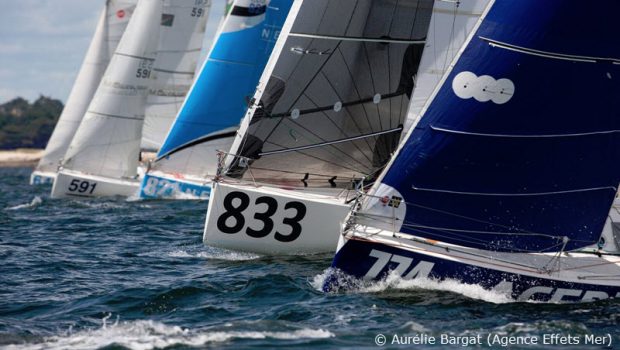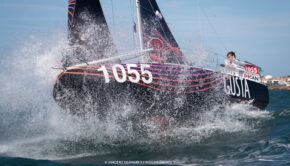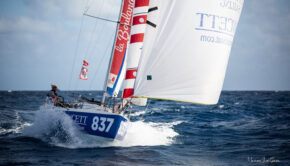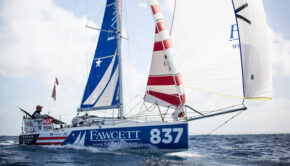International Attraction for Mini Transat
Published on May 30th, 2017
For the fortieth anniversary of the Mini Transat, there are no fewer than fourteen nationalities set to be represented at the start. In total, thirty Mini Class soloists from overseas will be competing, which equates to a little over a third of the overall line-up.
Since the first edition of the Mini Transat, 13 overseas sailors have secured a podium finish. Our minds naturally turn to the Swiss sailors Laurent Bourgnon (2nd in 1987), Yvan Bourgnon (winner in 1995) and Bernard Stamm (3rd in 1995). We must add to this list the Polish sailor Kazimir Jaworski, 2nd in 1977 for the first edition of the race and New Zealander Chris Sayer, 3rd in 1999, aboard a prototype built in his native country.
Certain overseas sailors have gone on to become stars of offshore racing, such as Britons Ellen MacArthur and Sam Davies. In Spain too, the Mini Transat has served as a springboard for sailors of the calibre of Alex Pella, winner of the Route du Rhum 2014 in Class40 as well as Anna Corbella, who is returning to the 2017 edition after completing two editions of the Barcelona World Race.
In fact, the vitality of the Mini Class in southern Europe is evidenced by the fact that Italy and Spain make up the largest contingents of overseas sailors.
There are 97 pre-registered in the biannual race, among them 75 that have fulfilled the quota qualification and 23 are currently processing the qualification. Only 84 mini sailors are permitted to compete.
The nationalities taking the start in 2017:
France (pending) – Estonia (1) – Switzerland (3) – Italy (7) – Ireland (1) – Belgium (1) – Spain (6) – Germany (4) – Holland (1) – Czech Republic (1) – Croatia (1) – Australia (1) – United Arab Emirates (1) – UK (1)
Class news – Race news – Facebook
Background
With an overall length of 6.50m and a sail area pushed to the extreme at times, the Mini Class offers incredibly seaworthy boats. Subjected to rather draconian righting tests and equipped with reserve buoyancy making them unsinkable, the boats are capable of posting amazing performances in downwind conditions… most often to the detriment of comfort, which is rudimentary to say the least.
The Mini Transat has two legs to carry the fleet from La Rochelle, France to Martinique, West Indies. The leg from La Rochelle to Las Palmas de Gran Canaria is a perfect introduction to proceedings before taking the big transatlantic leap.
The first leg starts on October 1, with the fleet thrust into the Bay of Biscay which can be tricky to negotiate in autumn, while the dreaded rounding of Cape Finisterre on the north-west tip of Spain marks a kind of prequel to the descent along the coast of Portugal. Statistically, this section involves downwind conditions, often coloured by strong winds and heavy seas. Making landfall in the Canaries requires finesse and highly developed strategic know-how.
The second leg begins on November 1, with the solo sailors most often carried along by the trade wind in what tends to be a little over two weeks at sea on average. At this point, there’s no way out: en route to the West Indies, there are no ports of call. The sailors have to rely entirely upon themselves to make Martinique.









 We’ll keep your information safe.
We’ll keep your information safe.